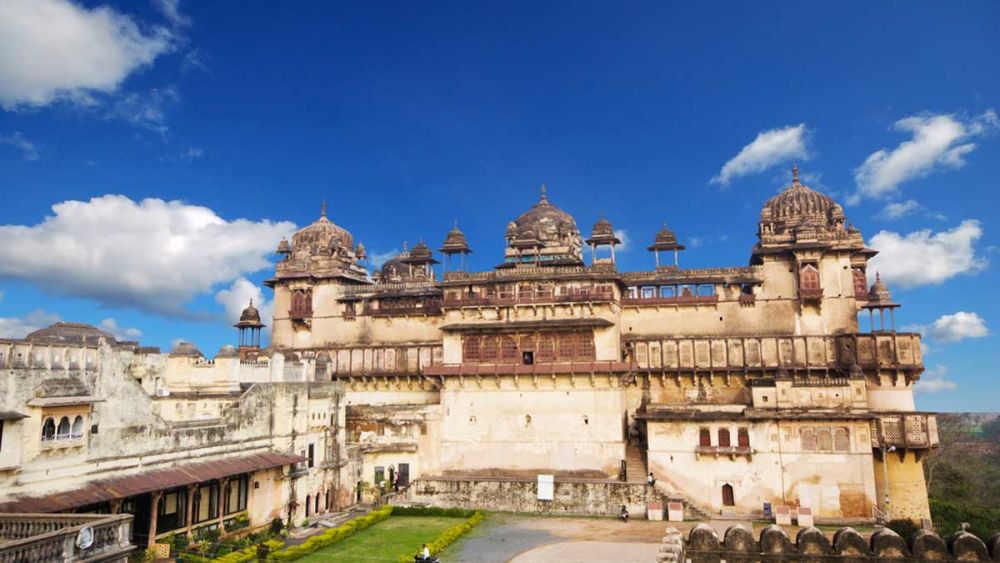

Jahangir Mahal is a quintessential example of the Mughal-influenced Rajput architecture in India, located in Orchha, Madhya Pradesh. This historical monument was constructed in the 17th century by the Bundela Rajput ruler, Maharaja Bir Singh Deo, as a symbol of his warm reception of the Mughal Emperor Jahangir to Orchha. Its strategic position atop a hillock, commanding the skyline of Orchha, was not only for grandeur but also for the defensive advantage.
Over time, the palace has stood the test of time and history as it witnessed the change of hands between empires and the transformation of Orchha itself. In the past, it served multifunctional roles including as a royal residence and later as a garrison and administrative building during British India.
The tourism history of Jahangir Mahal is closely interconnected with the broader discovery of Orchha's other historical sites by global travelers. For years, Orchha was a hidden gem, known primarily to history aficionados and local travelers. However, as more visitors began seeking out the unexplored and culturally rich locations of India beyond the well-trodden paths, Orchha and Jahangir Mahal received increasing attention.
The establishment of sites like Jahangir Mahal on the tourism map can be attributed to the concerted efforts of the Madhya Pradesh Tourism Development Corporation, which actively began promoting Orchha as a destination with a bounty of architectural wonders and serene natural beauty. The inclusion of Orchha into travel itineraries, along with the Government's efforts in conservation and restoration, further catalyzed interest among domestic and international tourists.
In recent years, tourism trends at Jahangir Mahal have evolved significantly. There has been an increased interest in heritage stays, with travelers preferring to stay in properties that reflect the historical grandeur of their surroundings. As a result, many old palaces and havelis in Orchha have been converted into heritage hotels, providing tourists a feel of the royal lifestyle.
Another emerging trend is the rise of experiential tourism. Visitors are not only interested in admiring the architectural marvels but also in understanding the culture, history, and daily lives of the local population. Activities such as walking tours, sound and light shows, and local cuisine experiences have become popular among tourists visiting the Jahangir Mahal.
Ecotourism has also gained ground, with the nearby Betwa River and surrounding dense forests offering a perfect setting for nature lovers and adventure enthusiasts. The development of eco-friendly facilities and the promotion of nature-related activities such as bird-watching, trekking, and river rafting are a testament to the region's inclusive approach to tourism development.